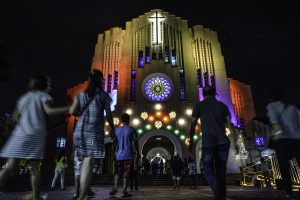Asteria Lending Inc. Unit 306 3/F 6762 National Life Insurance Bldg. San Lorenzo, Ayala Ave. Makati City
We’re Open: Mondays – Fridays
Office Hours:
9:00 am – 7:00 pm
Email:
[email protected]

The early morning breeze is cold. The day seems shorter and the night longer. People are starting to decorate their homes, Christmas songs are played in the airwaves ever since September, and now we’re only days away from the most anticipated holiday of all, yes, it’s just days away, and it is CHRISTMAS once again.
Christmas is the most awaited season in the Philippines. It is very evident because as early as September people are doing all their preparations. Some are busy doing their Christmas shopping; others have already decorated their house. Almost all the things related to this festivity bring joy to everyone.
How do you spend Christmas in the Philippines? It is said that the Philippines have the most extended Christmas season in the world.
Here we are going to take a look at some of the unique Christmas traditions enjoyed in the Philippines:
One of the first signs of Christmas is the bright Christmas decorations, and the festive music playing everywhere, people’s homes, on the radio and in stores. One can hear the Filipino Christmas tunes like “Pasko Na Sinta Ko.”
You can expect carolers or “Cumbancheros” to visit the house to serenade you and the neighbours.
There is usually a re-enactment of the Holy Couple’s journey to Bethlehem, called “Panunuluyan” at the town plaza on Christmas Eve.
Almost everyone attends midnight Mass on Christmas Eve.
The most common tradition that is still observed is attending Simbang gabi or pre-dawn masses that starts from December 16 to December 24. This is a nine-day novena in preparation for the big celebration of the birth of the baby Jesus. Typically, people would go to church as early as three in the morning to be part of it. Other churches also do it at night to accommodate the schedule of people who work.
They say that if you would be able to complete the nine days, anything you would wish will come true. After the mass, people customarily buy the native delicacies Puto Bumbong (purple glutinous rice cakes steamed in bamboo cylinders and sprinkled with grated coconut and brown sugar) and Bibingka (rice cakes made from rice flour topped with carabao cheese and grated coconut) that is best paired with Salabat (ginger tea).

At the end of the novena, on the midnight of the 24th just before the 25th, a grand mass is done to welcome the birth of the saviour. Filipino families usually prepare their Noche Buena to be shared right after the mass.
Families prepare different dishes consisting of Hamon, queso de bola, pancit, fried chicken, rice cakes and various desserts. Almost every family has their special delicacy that is cooked only during Christmas. Christmas is the most celebrated season in the Philippines, and everybody will do anything to be able to serve most of the Christmas dishes.
You see families and friends getting together for “Noche Buena” after the Mass ends. Usually, there is festive meals, dancing and gift exchange. This goes on all night.
Everyone enjoys the native foods outside the church like “Puto Bumbong” which is steamed rice inside of a small bamboo tube, “Bibingka” which is rice cake with fresh coconut meat and salted eggs, and “suman” which is steamed rice (of course) wrapped in banana leaves.
On the big day, the Christmas day itself, people go to church to give their thanks. Children wear their new and best clothes accompanied by their parents to visit, after the mass, their godparents and be given their Aguinaldos or gifts.
It is also a custom for Filipinos to kiss the hands of the elderly known as Pagmamano be it their relatives or their godparents. During Christmas, it is a way of greeting and wishing the elders a merry season.
This is the classic symbol of Pasko (Christmas). It’s basically a five-point star, hung with tails or tassels sprouting from the bottom two points. Materials used in making this range from thin wooden sticks and colourful paper to steel frames with shell or glass with matching electric lights. Apart from this common ornament, many Filipinos decorate their homes and workplaces to show their holiday spirit.
Over 80 per cent of Filipinos are Catholics, although there are lots of other strong religions. To the Catholics, Christmas will never be complete without the Belen: the act of depicting the scene of Jesus Christ’s birth. You can find everything concerning the birth of Jesus here; the manger and infant Jesus, Mary, Joseph, three kings and their donkeys, shepherds, and barn animals topped with an angel and a four-point star.
Puto Bumbong: Native Rice Dessert
Hands down, this is many people’s favorite Kakanin or type of rice cake. Topped with shaved coconut, brown sugar and lots of butter, this purple rice cake is best enjoyed piping hot. It’s traditionally enjoyed as a treat after hearing dawn masses, but you can have it any time you want.
Many traditions have been changed or not done anymore at all. Christmas has also become too commercialized that sometimes the true meaning of the festivity is already forgotten. The good thing to note is that even though there have been some alterations in the customs and traditions, there are those who still stick by them.
The Christmas celebration draws to a close with the feast of the three kings on the first Sunday of January.